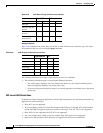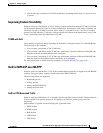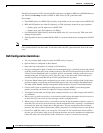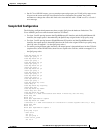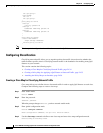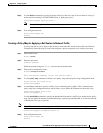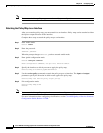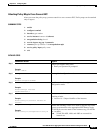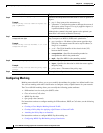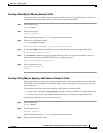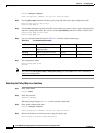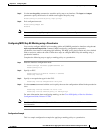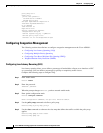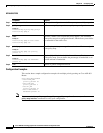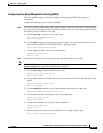
24-38
Cisco ASR 901 Series Aggregation Services Router Software Configuration Guide
OL-23826-09
Chapter 24 Configuring QoS
Configuring Quality of Service (QoS)
Configuring Marking
Marking network traffic allows you to set or modify the attributes for packets in a defined traffic class.
You can use marking with traffic classification to configure variety of QoS features for your network.
The Cisco ASR 901 marking allows you to modify the following packet attributes:
• Differentiated services code point (DSCP) value
• Class of service (CoS) value
• MPLS Exp bit value
• Qos-group value (internal)
For instructions on how to configure marking for IP Precedence, DSCP, or CoS value, see the following
sections:
• Creating a Class Map for Marking Network Traffic
• Creating a Policy Map for Applying a QoS Feature to Network Traffic
• Attaching the Policy Map to an Interface
For instructions on how to configure MPLS Exp bit marking, see:
• Configuring MPLS Exp Bit Marking using a Pseudowire.
Step 6
rewrite ingress tag pop 1 symmetric
Example:
Router(config-if-svr)# rewrite ingress tag
pop 1 symmetric
Specifies the encapsulation modification to occur on packets at
ingress.
• pop 1—Pop (remove) the outermost tag.
• symmetric—Configure the packet to undergo the reverse of
the ingress action at egress. If a tag is popped at ingress, it
is pushed (added) at egress.
Although the symmetric keyword appears to be optional, you
must enter it for rewrite to function correctly.
Step 7
xconnect
peer-ip-address vc-id
encapsulation mpls
Example:
Router(config-if-srv)# xconnect 1.1.1.1 100
encapsulation mpls
Binds an attachment circuit to a pseudowire, and configures an
Any Transport over MPLS (AToM) static pseudowire.
• peer-ip-address—IP address of the remote provider edge
(PE) peer. The remote router ID can be any IP address, as
long as it is reachable.
• vc-id—The 32-bit identifier of the virtual circuit (VC)
between the PE routers.
• encapsulation—Specifies the tunneling method to
encapsulate the data in the pseudowire.
• mpls—Specifies MPLS as the tunneling method.
Step 8
service policy input
policy name
Example:
Router(config-if-srv)# service-policy input
policy1
Attaches the policy map to an interface.
• input—Specifies the direction in which the router applies
the policy map.
• policy name—The name of the policy map.
Step 9
exit
Enters global configuration mode.
Command or Action Purpose



